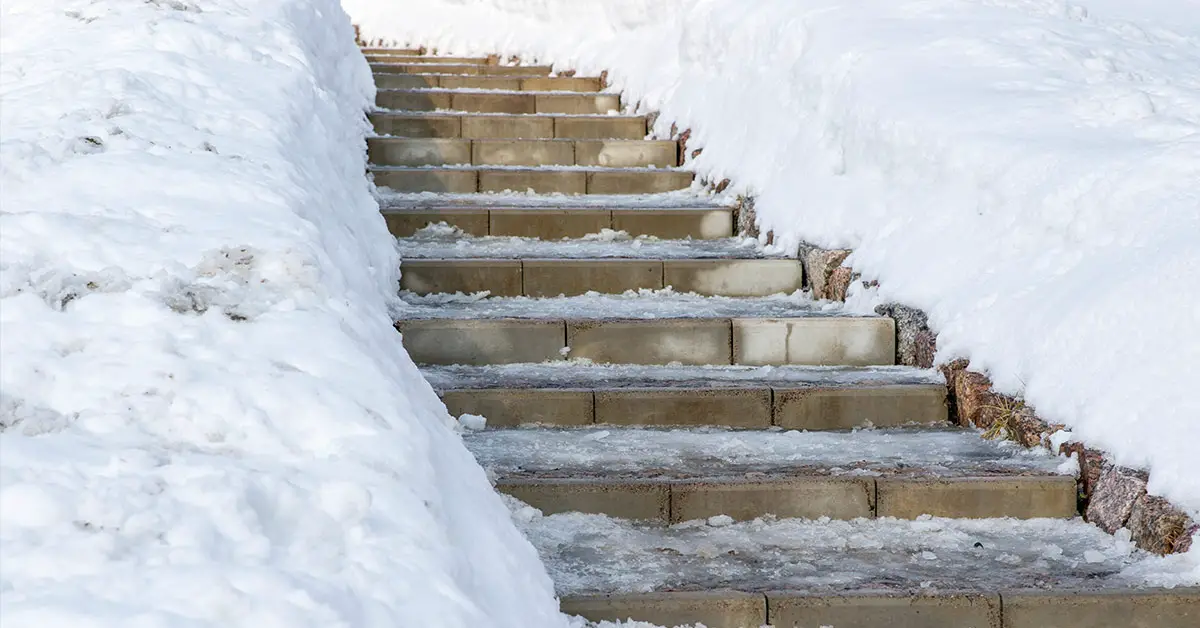Ice melt is a must-have in the winter. While snow and chilling gales look lovely from the safety of indoor heating, stepping outside is much less magical. Ice hides under snowy walkways, stairs, and driveways. It’s too easy to slip and suffer a nasty — sometimes debilitating — fall. Even once you pave the way, ice remains, waiting like a banana peel in a cartoon for someone to stumble on it. Picking at ice with a shovel often doesn’t remove every inch of it. It’s also a pointlessly exhausting task. The easy solution is to pour ice melt over the patch and watch the danger trickle away.
How to Make Homemade Ice Melt
You may not want to buy ice melt because of the harsh chemicals that could be toxic to animals and wildlife. Or perhaps you’re looking for a cheaper alternative. Having this recipe on hand is great even if you usually purchase your ice melt. You never know if you suddenly get snowed in and become in desperate need of de-icing your property. Additionally, many people are quarantining due to COVID-19 and don’t have the option to go shopping.
Whichever the case, this recipe is super easy to throw together. It requires a large empty container and three ingredients that you most likely already own: dish soap, rubbing alcohol, and warm water. After you mix these things together, pour the icemelt over the hazardous area. You’ll notice the ice grow soft and less slippery, making it easy to clear away for a safe and non-dangerous path.
Homemade Ice Melt Recipe
Ingredients:
- 1/2 gallon of warm water
- 6 drops of dish soap
- 2 oz. rubbing alcohol
Instructions:
- Mix all of the ingredients into a milk jug or similarly large container. You could even use a spray bottle for easy application.
- Pour the mixture over icy patches on your walkway and driveway and allow the ice to melt away. [1]
How to Stay Safe on Icy Paths
Even if you use ice melt on your property, public areas may not be properly de-iced. Unfortunately, as a result, slipping on ice and snow results in many patients showing up to clinics and emergency rooms every winter season. Actually, the Bureau of Labor Statistics reported 42,000 injuries and illnesses on the account of ice, snow, and sleet in just 2014. [2]
Here’s how to avoid injuring yourself because of ice: First off, bend your knees slightly as you walk and try to keep flat-footed as you take small, slow steps.
“Walk in designated walkways as much as possible,” says Dr. Drew Moss at Mayo Clinic Health System. “Taking shortcuts over snow piles and other frozen areas can be hazardous. Look ahead when you walk. A snow- or ice-covered sidewalk or driveway, especially if on a hill, may require travel along its grassy edge for traction.” [3]
Here are some more safety tips:
- Keep your hands out of your pockets. This way, they can catch you in case you fall. Walking with your arms by your sides can also improve your balance.
- When it’s cold, be cautious around all areas that look dark and wet.
- Try to avoid carrying heavy loads.
- If there’s one available, always use the hand railing.
- Take care as you exit and enter vehicles.
- Avoid footwear with smooth soles and heels. Instead, opt for non-slip rubber or grooved soles.
- Wear a thick, heavy coat that could potentially break your fall.
- Stay in designated walking areas; avoid shortcuts over unpaved locations. [4]
Of course, when it comes to your own landscape, ensure that you properly pave the walkways. Keep the driveway clear. If there’s potential ice, sprinkle salt over the area to prevent it from forming. Be extra careful when stepping out during the early morning; that is when the ground is frozen and more slippery than late afternoon. [5]
And of course, if you do find ice, you have the perfect recipe to clear it.
Keep Reading: Vinegar Is the Secret to Soft Towels, Whiter Whites, and More Laundry Solutions
References:
- “How to make your own ice melt.” WYFF4. Feb 16, 2015.
- “42,480 work injuries involved ice, sleet, or snow in 2014.” US Burea of Labor Statistic. April 27, 2018.
- “Tips to prevent injuries on icy, snowy sidewalks.” Mayo Clinic. Micah Dorfner. Jan 12, 2017.
- “Walking Safely in Slippery Conditions.” Illinois IGB.
- “Mind the ice! Eight ways to keep yourself from falling.” The Globe and Mail. Justin Vanderleest. Feb 13, 2014.

